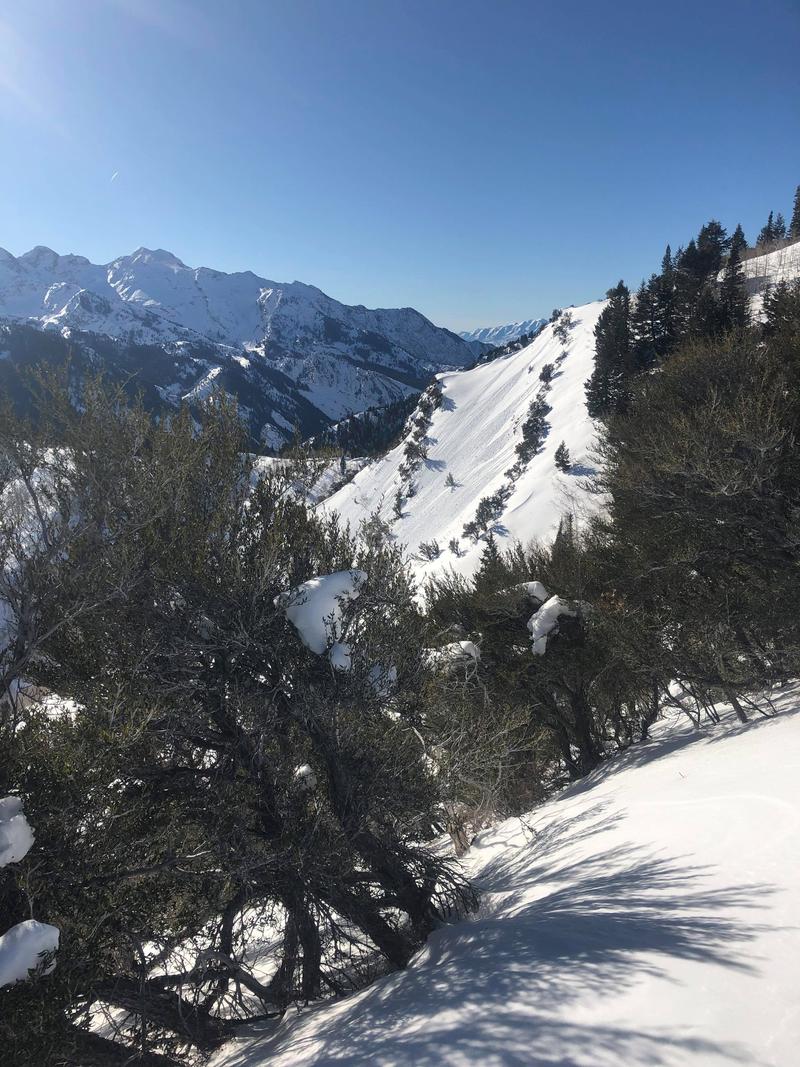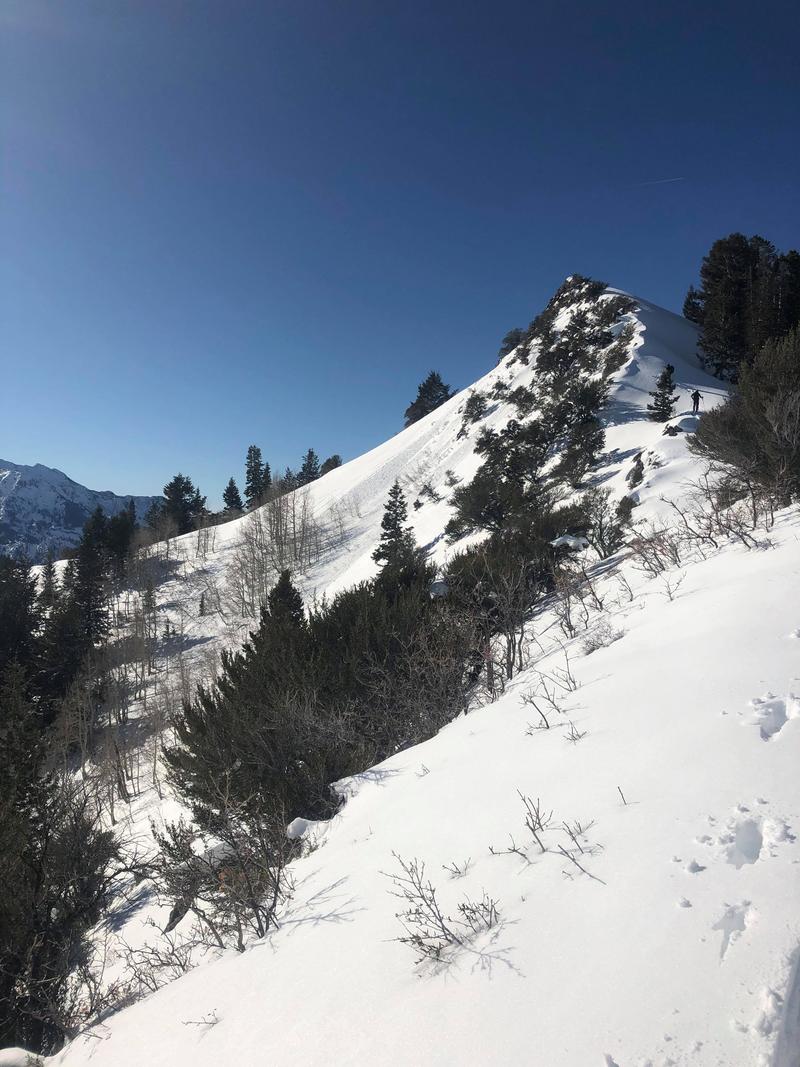Observation Date
1/7/2020
Observer Name
Champion & Meisenheimer
Region
Salt Lake » Big Cottonwood Canyon » Butler Fork » Butler Basin
Location Name or Route
Ridgeline above Butler Basin
Comments
Another concern we had today was loose wet avalanches primarily small wet sluffs. We saw a lot of signs of wet sluffs today on steep south-facing aspects, most of these were isolated to terrain with a shallow snowpack or along rock bands or other features to draw heat. While these wet sluffs may not be large, they can be enough to knock someone off their feet and drag them through unforgiving terrain, over rocky features or into a terrain trap. Beyond the terrain, these wet sluffs and roller balls could be enough to trigger that a larger slab avalanche in the new PWL on the south-facing terrain.
Photos of wet sluffs on steep south-facing terrain.


There is good news though!
North aspects have a generally stable snowpack, still, be thinking about wind and that early season PWL, and are holding onto soft snow. This is making for some great riding conditions on the north end of the compass. See the video below.
Today's Observed Danger Rating
None
Tomorrows Estimated Danger Rating
None






